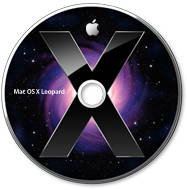What is the rate of Mac OS X Leopard adoption?


Of course, Apple has the best statistics but it's unlikely that we will receive much word on adoption rates until the Worldwide Developers Conference in June. Still, aside from the semi-educated guesstimates available for a fee from analyst companies, there are several developers that provide a unique view of the installed base.
Mac developer The Omni Group, a Seattle-based maker of a number of Mac OS X business applications, collects OS version information from its customers and provides it for free on the Web. The company's software includes the notable OmniPlan project management software and OmniGraffle diagramming and drawing application.
According to the company, Leopard has a 32.5 percent share and Tiger, 67 percent. While the figures sound right, Omni splashes some cold water on its own data.
The information is provided as-is. We're not going to tell you exactly how many individual users have submitted the information, nor can we place any guarantee on the accuracy of this information. Remember, this is not a poll of the Mac OS X community at large, just a subset of our customer base.
Tom Harrington of Atomic Bird — the maker of a number of interesting productivity programs such as MondoMouse, which lets users add many useful functions to mice buttons, and Macaroni, a system maintenance tool — built a version of the Sparkle automatic software updating framework that also checks for OS version.
His SparklePlus statistics page reports that 77 percent of his users have moved to Leopard! This is a very high number and certainly can't be true of the entire market. Atomic Bird's customer base has a lot of early adopters.
Here's another Leopard adoption figure to toss on the virtual table: 10 percent. This was the count taken at last month's BMUGWest user group meeting in San Francisco.
My guess is that with the recent 10.5.2 update that figure may have climbed a bit, but at the February meeting, many attendees expressed concerns about outstanding bugs and compatibility with this program or that in their workflows. For the most part, these users have a lot of experience with OS transition and guard their productivity — many avoid early versions of an OS release, Mac or otherwise.
So, the Omni Group's 30 percent figure sounds as if it's nearer to the target. That means that most Tiger users haven't even begun their transition to Leopard.
With the tidal wave of publicity surrounding Leopard support in the fall, as well as the distraction of the iPhone SDK, it's easy to believe that Leopard is old news. Not! The Mac platform and community are still at the beginning of the Leopard transition.
This must be troublesome for developers looking at creating new applications. As I wrote back at the Macworld Expo in January, Leopard (and Xcode 3) offer many productivity advantages to developers, such as garbage collection (automated memory management) and support for new Core service, and Quartz GL acceleration.
For example, Raphael Sebbe, the CEO of Creaceed, said in January that the update the company's Morph Age Pro wouldn't have made its Expo release if it weren't for Leopard. The new version was only for Leopard.
“Supporting older platforms takes time. We could could have [supported Tiger] but we would have sacrificed the [user] experience,” Sebbe said.
I spoke to several developers last week who echoed Sebbe and said their new products will be Leopard-only. The programming overhead for Tiger versions was too steep, they said, and would add months of developer time as well as a greater cost for testing.
"The big question is Tiger," said one small developer who declined attribution.
In addition, developers believe that few bugs in Tiger will be fixed. Daniel Jalkut of Red Sweater Software (the maker of the MarsEdit blogware) posted an amusing experience on this subject recently in his blog.
He discovered a crashing bug in Cocoa's NSURLConnection API and reported it to Apple. But he didn't hold out much hope that it would be addressed. After all, Apple is focused on Leopard and the iPhone.
Since the issue only affects 10.4.11 users, I figured the chances of a fix might be slim. Apple naturally is most concerned with the latest releases of 10.5, although they continue to issue security fixes to protect users on 10.4.11. But this was just an extremely annoying crash, not a security vulnerability, as far as I knew.
However, the bug had security implications and it was fixed in the Security Update 2008-002 patch. Jalkut continued:
Everything about this description sounds like the bug I reported, except that I didn’t realize it could possibly be used to exploit the security of a system. I guess this is one of those situations where it’s lucky there was as security flaw, because without it, I don’t know if it would have ever been addressed.
Of course, given Apple's history with engineering resources and the competition between the iPhone and Leopard efforts, we can only hope that Apple will continue to give Leopard's bugs proper attention. And maybe some of Tiger's too?